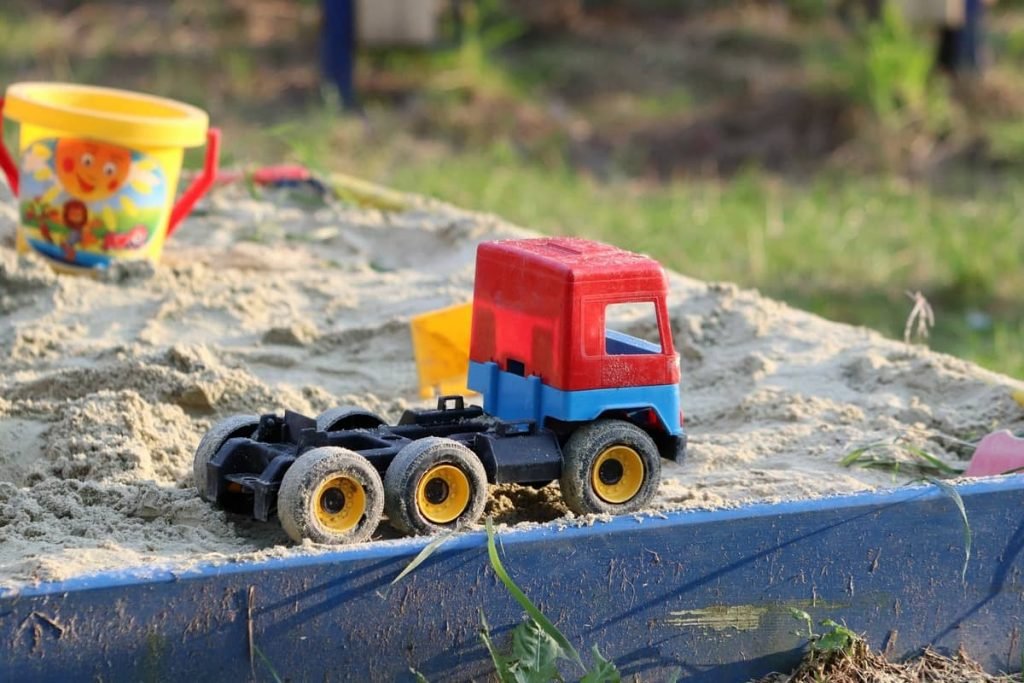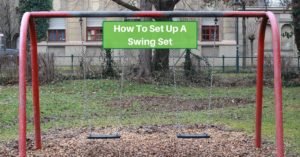Kids love sand! And a sandbox in your backyard can be a great way for them to pass endless hours of fun. It’s soft, safe, and allows children to build to their heart’s content. But to keep it safe, you have to keep it clean.
Taking care of a sandbox isn’t hard or time-consuming. But it does require attention and care. Here are some basic steps you can take to keep your child’s sandbox a great place to play!
Replace Sand Regularly
No matter how well you care for a sandbox, the sand eventually gets dirty. The time frame for that can vary depending on how well you care for it and how often your children play in it. But eventually, there’s always a point where the sand needs to be replaced.
First, be sure to choose play-grade sand. Sand comes in many forms, and some of them contain clay or other materials. However, the sand for sandboxes is softer and less abrasive.
You’ll want to replace the sand at least once a year, at the beginning of the “outdoor play” season. But you may want to replace it more often. If it’s used regularly, you might change it several times a year. If your child has an accident in it, it’s important to change the sand, also. Other animals may discover it, or it could become infested with insects; those are good times to replace the material, too.
Cover It Up
A tight cover over your sandbox will help keep out pests and protect it from inclement weather.
Cats and rodents can be attracted to sand to, ummm, do their business. Some bugs prefer sand for nesting. Rain makes the sand wet – which means it’s sticky and less fun to play in. Trees can drop leaves, sap, and twigs, and the wind can blow trash into the play area.
A good cover can help minimize all of these. Plastic, store-bought sandboxes often include a lid molded to fit. For a homemade sandbox or one that doesn’t have a lid, a tarp weighed down by rocks may be your best bet. We’ve also seen sheets of plywood used, although they’re often heavy and still let insects in.
Help the kids build their sandcastles with these great block toys!
Keep It Dry
Dry sand is much more fun than wet sand! A cover, as we already mentioned, is one way to keep it dry.
But you’ll also want to be sure that your sprinklers aren’t turned on while the sandbox is uncovered. And don’t let your children bring drinks into it.
Make sure they dry off after swimming and even after washing their hands. Wet sand clumps; it also sticks. It’s more likely to get tracked out of the box and all over the house!

Be Sure Your Children Wash Their Hands Before And After
It’s a good idea for kids to dry their hands before playing in the sand, but it’s also good for them to wash before and after.
Washing before will help keep your sandbox clean. After all, sticky jelly doesn’t mix well with sand! Proper handwashing will help keep them from tracking other contaminants into the sand, too.
It’s a good idea for them to wash their hands after, too. It will get rid of any sand that sticks to them, but even with the cleanest sandbox, there could be some germs that you want to get rid of.
Clean It Regularly
Even with the best of care, your sandbox can get dirty. Be sure to clean it out regularly!
It’s best to do this after every use, but don’t put it off for more than a couple of weeks, depending on how often your children use the sandbox.
Use a litter box scoop or a leaf rake to filter the sand. This will help you find any debris as well as pieces of broken toys – or even whole toys that have disappeared!
Wash off toys occasionally, too. Be sure to let them dry before returning them to the box.
Disinfect The Shell
If you have one of those plastic sandboxes available at many retailers, you should do a thorough cleaning on it at least once a year.
You should do this whenever you’re going to change the sand. The cleaning process is the same as for a plastic kiddie pool. Again, before it dries before refilling!
Is A Sandbox Too Much?
If you have more limited space, you could opt for a sand table instead of a full sandbox. These smaller plastic play tables include features for pouring and playing with the same types of sand you’d use in the box. There are a lot of great options available!
Conclusion
Children can have a wonderful time playing in a sandbox. Fortunately, they’re easy to care for (sandboxes, that is – kids, not so much). Be sure to stay on top of the job to help keep yours a fun, safe, and healthy place to play!









